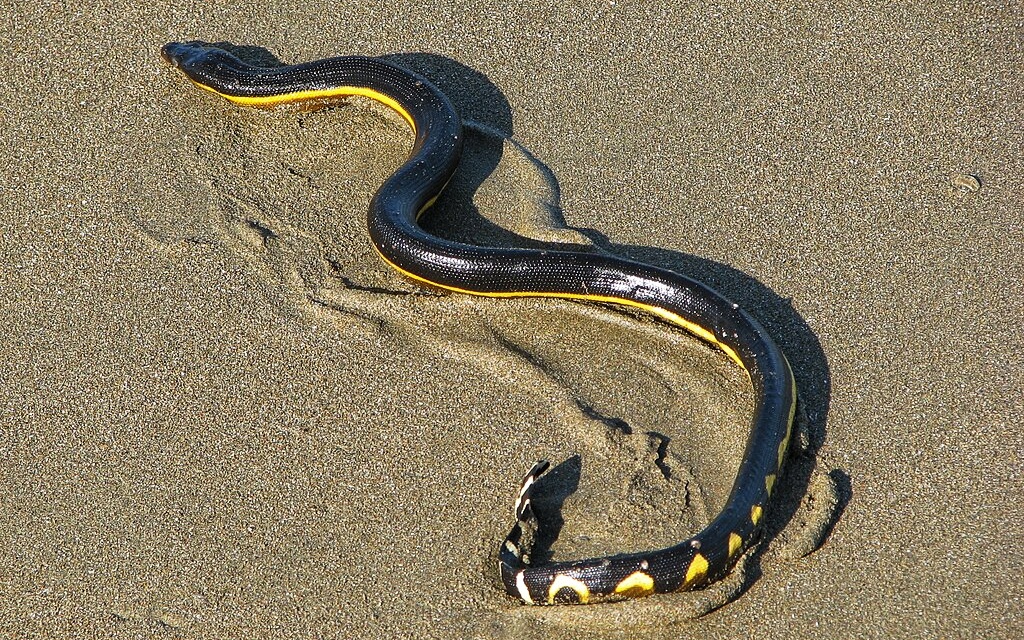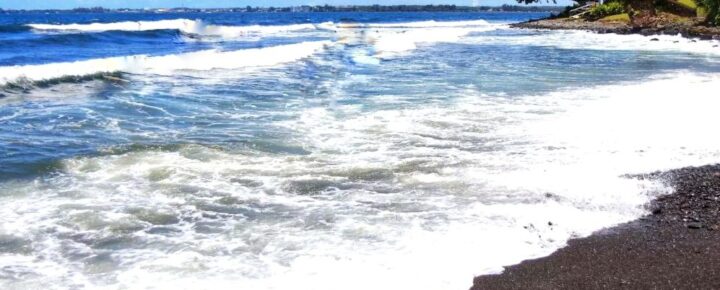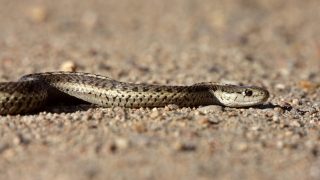When a highly venomous yellow-bellied sea snake washed ashore recently at Honolii Beach on the Big Island near Hilo, it prompted renewed warnings for Hawaii visitors and residents. But it also underscored a recurrence with three separate incidents now reported in the past year. While this species is typically drifting in the open Pacific Ocean, rare strandings along Hawaii’s shores occur.


These and prior sightings are raising new questions. Are rising ocean temperatures, changing currents, or weather cycles pushing more of these snakes toward Hawaii’s beaches?
What happened at Honolii Beach.
On February 4, lifeguards at Hilo’s Honolii Beach were alerted to a live three-foot-long snake pinned under a log near the shoreline. The Hawaii Department of Land and Natural Resources confirmed the species as a yellow-bellied sea snake, and lifeguards contained it in a five-gallon bucket until the Hawaii Department of Agriculture arrived to collect it. No one was injured in the incident.
State officials from DLNR and the State Department of Agriculture have emphasized that this species can be more venomous than a cobra but is not known for aggression. The real risk is accidental handling, particularly by visitors who might mistake it for an eel or another harmless marine creature.
Why sea snakes are appearing at Hawaii beaches.
Hawaii has no native land snakes; introducing any snake species is strictly prohibited. The yellow-bellied sea snake, however, is a pelagic species that naturally inhabits the open Pacific Ocean, drifting with currents across vast distances. Unlike invasive land snakes, it does not establish populations in Hawaii or reproduce in its waters.
While these snakes spend their entire lives at sea, what are considered occasional strandings have been recorded in Hawaii. In 2024, yellow-bellied sea snakes were found at Waimanalo Beach on Oahu in July and Wailea Beach on Maui just days earlier. These and the latest February 2025 sighting at Honolii Beach on the Big Island suggest that these strandings may not be as isolated as once believed.
Scientists say that environmental factors may play a role in these occurrences. Shifts in ocean currents, storms, or warming sea temperatures could be influencing their movements. Some researchers have linked weather cycles impacting Hawaii to changes in ocean patterns, which may explain why island beaches have seen multiple strandings in recent years.
While these events remain rare, the recent frequency of sightings has raised questions about whether they may become more common in the future.
What makes the yellow-bellied sea snake so dangerous.
This species is one of the most venomous sea snakes in the world. Its bite can cause paralysis, muscle damage, and respiratory failure in extreme cases. Unlike land snakes, its venom is adapted explicitly for marine hunting, making it even more potent.
Despite this, documented bites on humans are extremely rare. The greatest risk comes from accidental handling, especially by beachgoers unfamiliar with Hawaii’s marine wildlife. And therein comes the warning.
What visitors should know about sea snakes in Hawaii.
The Hawaii Department of Agriculture urges anyone encountering a sea snake to avoid touching or approaching it. Even though the species is not aggressive, it will bite if handled.
Lifeguards should be alerted whenever a sea snake is spotted onshore. The Hawaii Pest Hotline at 808-643-PEST is the official reporting channel for stranded wildlife.
While these snakes are rare along Hawaii’s beaches, it will take some time to determine whether sightings may not be isolated events.
Should visitors be concerned?
The yellow-bellied sea snake does not pose a significant threat to Hawaii visitors. Unlike aggressive land snakes, this species does not seek out human interaction and remains in the ocean whenever possible.
The primary risk remains accidental handling, so awareness of these creatures remains the best safeguard. Visitors and residents should report sightings and avoid touching anything snake-like found near the shoreline.
For travelers in Hawaii, this event serves as a reminder to be mindful of our marine life and to seek local guidance when encountering unfamiliar creatures.
Get Breaking Hawaii Travel News







Looked online. These snakes can stay underwater without surfacing for up to 3 hours. One drop of venom can kill 3 adult men. A dead snake can still strike 2 hours after being dead because of nerves in the head and it’s instinct to strike. They can dive up to 300 feet and reproduce in or on top of ocean algae blooms. Their teeth can penetrate through tee shirts but not diving wet suits. It explains that they feed on small fish. IMO sounds pretty dangerous. Thanks BOH for the strong Visitor Warning message. I figure the more people know the more cautious one can be while around the water.
The notion of climate change driving sea snakes to us vs sea snakes just doing what sea snakes do is an exposure of the silliness that pervades the media today. Natural sciences deny climate change. Climatology denies natural science.
What you learned in high school is adequate for you to compare the facts of natural science with this fear-porn nonsense.
Hawaii Tourism Authority is to blame for this. Or Governor Josh Green. No, wait…disrespectful and entitled tourists are to blame. Where is the Aloha?!? Yeah, somebody is to blame.
No food at sea. Coming ashore to get Hoku’s eggs. Please don’t fall asleep on the beach. How fast can these snakes travel over the water? Snakes prefer warm places at night and shady places during the day so do they come ashore seeking a palm tree? Should you face the ocean or the land or pretty much skip the beach altogether? From the title you explained Visitors Warned. More than one generally means more to come.
Sharks, snakes what’s next spiders? I guess less time at the beach means more spending money somewhere else. Really what is Hawaii without the beaches. It’s all in how you perceive it to be.
You mentioned these snakes don’t breed out at sea but live their whole lives in the water. That means they have to breed on land but live their lives at sea right? The surf must wash them ashore hitting the sand and pinning them under logs etc. That means if walking in shallow water you could get bit in the foot or leg and not even see or know how it happened right? Great now kids probably will make squiggly lines in the sand going down to the water just for a good laugh. Hey that’s one way to keep you off the beach and spend more money in which HTA’s focus is. Gotta love Hawaii.
Thanks for warning us, although I doubt I would touch it even if it did get stranded on Maui beaches.
Aloha,
And you said I won’t touch any deadly sea snake on a beach and they’d bite, and avoid, how very bad.
So the takeaway here is if you find one, take pictures so that it can be documented and tell the lifeguard. Document and report. Are you saying not to attempt to pin it down with say a boulder? Ugh, hate hate snakes! 🐍 terrified of scuba diving the Great Barrier Reef for an encounter with a poisonous sea snake, now they are riding the currents to my beloved Hawaii.
I’m in the water at that beach all the time, and the idea of one of these just floating out there is enough to make me second-guess being out there too long. Let’s see how many more show up in the next year before I start to get too worried. Luckily too they aren’t out to get me.
Three in a year? That’s not seemingly just random anymore. Maybe these snakes know something we don’t about where the ocean is heading. Not sure but I’m keeping my eyes out for anything eel like after this.
I saw something like one of these a few years ago on Maui but didn’t give it much thought or know even what it was at the time. Now I’m wondering if it was actually a sea snake or just an eel. Either way, not getting close next time.
I remember when people used to say Hawaii didn’t have snakes at all. Now we’re seeing these deadly ones pop up at the ocean more often? Makes you wonder what’s changing out there.
I had no idea sea snakes were even in Hawaiian waters, let alone washing up on beaches. Three sightings in a year seems like more than just a coincidence. Are scientists actually tracking this or what is going on?